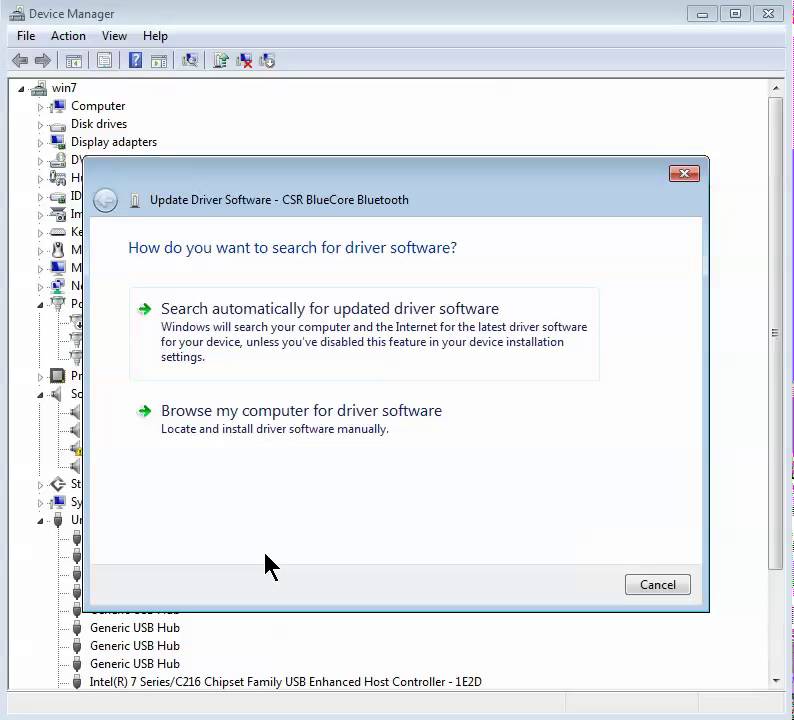
- #HOW TO MANUALLY INSTALL WIFI DRIVER WINDOWS 10 HOW TO#
- #HOW TO MANUALLY INSTALL WIFI DRIVER WINDOWS 10 DRIVERS#
- #HOW TO MANUALLY INSTALL WIFI DRIVER WINDOWS 10 UPDATE#
- #HOW TO MANUALLY INSTALL WIFI DRIVER WINDOWS 10 DRIVER#
In computing, an INF file or Setup Information file is a plain-text file used by Microsoft Windows for the installation of software and drivers.
Double-click your Intel® display device. Simultaneously press the Windows + X keys on your keyboard. #HOW TO MANUALLY INSTALL WIFI DRIVER WINDOWS 10 DRIVER#
You can restore the previous driver by using the rollback option.

Click on the next and it will ask a few question to you and it will try to fix the problem automatically. Start typing “Run programs” in the search bat and it will show the suggestion for “Run programs made for previous versions of Windows” Click on this and it will open up the compatibility troubleshooter window.
#HOW TO MANUALLY INSTALL WIFI DRIVER WINDOWS 10 DRIVERS#
How do I get old drivers to work on Windows 10?
Click on Next and follow the prompts to run the troubleshooter. Click on View All on the left panel of the screen. Type “Troubleshooting” without the quotes and click on Troubleshooting. Click on search bar next to Start Menu. #HOW TO MANUALLY INSTALL WIFI DRIVER WINDOWS 10 UPDATE#
On the menu bar, click the Update Driver Software button. In the Device Manager window, click to select the device for which you would like to find drivers. In the System and Security window, under System, click Device Manager. In the Control Panel window, click System and Security. How do I install drivers after installing Windows?
The specified driver(s) would be loaded and installed immediately. From the command prompt type the following command, drvload – A path to the driver’s. Click on ‘Utilities’ -> ‘Run’ -> Type ‘CMD’ and click on ‘OK’. Steps to open command prompt during BMR and install drivers using the DRVLOAD command How do I install drivers from command prompt? Click the Driver tab, click Update Driver, and follow the instructions. Double-click the device category, and then double-click the device you want. In the search box, type into and then click Device Manager. 
 Connect your Android device to your computer’s USB port. Step 3: Click Browse my computer for driver software. Since the device driver is not installed successfully, you should see a yellow exclamation mark next to the device. Step 2: Find the device from the device list and right-click on it. How do I fix device drivers not installed?įix 1: Use Device Manager to fix driver problem Select Show All Devices, and click Next. If prompted to install drivers, choose Install from a list or specific location (Advanced), then click Next. Connect the board to your computer via a USB cable.
Connect your Android device to your computer’s USB port. Step 3: Click Browse my computer for driver software. Since the device driver is not installed successfully, you should see a yellow exclamation mark next to the device. Step 2: Find the device from the device list and right-click on it. How do I fix device drivers not installed?įix 1: Use Device Manager to fix driver problem Select Show All Devices, and click Next. If prompted to install drivers, choose Install from a list or specific location (Advanced), then click Next. Connect the board to your computer via a USB cable. #HOW TO MANUALLY INSTALL WIFI DRIVER WINDOWS 10 HOW TO#
How to Install Drivers (Without an Installer) On the other hand, you can always download the driver right from your hardware manufacturer and install it on your own. Solution 3 – Download the driver from the manufacturerĮven though Device Manager is an incredibly useful tool, it won’t always download the best driver for you.
Steps 2: Windows 10 has a built-in troubleshooter to check and fix issues with hardware and devices. d) Right-click the driver and click Update driver software. a) Press Windows +X keys on the keyboard. 
How do I manually install a missing driver in Windows 10?
18 How do I find my drivers in Command Prompt?. 17 Does Windows 10 install drivers automatically?. 16 How do I find my USB drivers on Windows 10?. 15 How do I get driver of the unknown devices?. 14 What happens if a driver is not installed?. 9 How do I get old drivers to work on Windows 10?. 8 How do I bypass drivers in Windows 10?. 7 How do I install drivers after installing Windows?. 6 How do I install drivers from command prompt?. 4 How do I fix device drivers not installed?. 3 How do I install drivers without setup?. 1 How do I manually install a missing driver in Windows 10?.








 0 kommentar(er)
0 kommentar(er)
